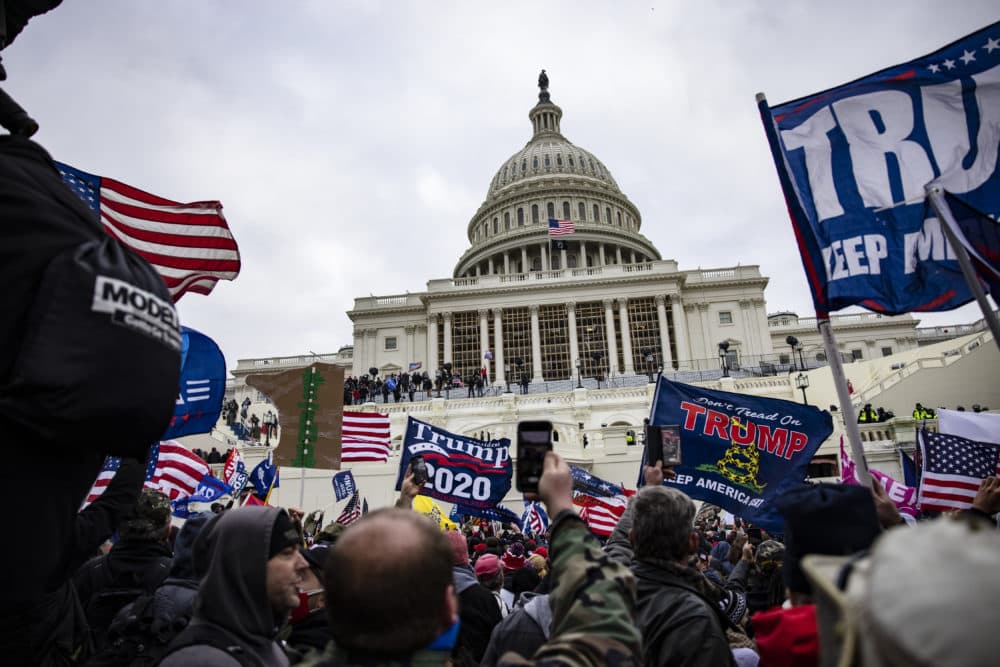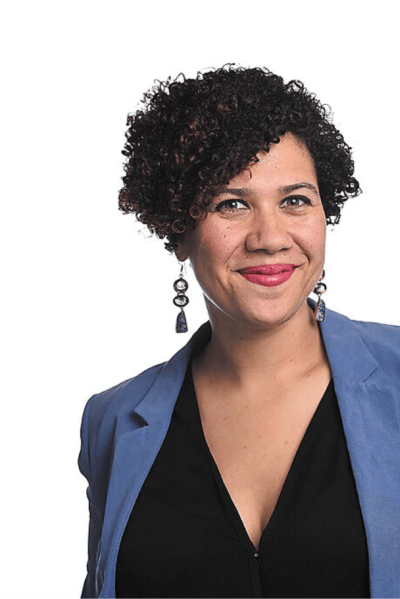Advertisement
Look For Intent When Comparing The Capitol Mob To Black Lives Matter, Historian Says
Resume
Some on the right have compared the violence of the insurrection to what happened last year at Black Lives Matter protests.
But according to new research from Princeton University, at least 93% of the Black Lives Matter protests were peaceful. The study looked at more than 7,000 protests in 2,000 locations.
Then there's the claim that leaders on the left have incited more violence than on the right, peddled by Republican Rep. Matt Gaetz after the insurrection. But Democratic leaders like President-elect Joe Biden decried any violence after Black Lives Matter marches, as did the group's leaders.

And there are several other reasons why the comparison to the Capitol riot doesn't hold up to reality, says Ashley Howard, an assistant professor of African American studies at the University of Iowa who focuses on the global history of racial violence.
Black Lives Matter marches were based on a visible truth while the attack on the Capitol was based on the demonstrable lie that the election was stolen, she says.
“Black Lives Matter protests were stemming from George Floyd, a man being knelt for nine minutes and dying, and so that really activated people to say something and to do something. It resonated all across the globe,” she says. “What we see with the Capitol siege is a direct undermining of a free and fair election in America.”
The Capitol riot showed a group demonstrating raw power, while Black Lives Matter protesters were asking for power. That’s “the crucial difference between those two events,” Howard says.
“In these two different instances, you have people without power who are trying to advance this project of America for equality for all and those who already have the power trying to make sure that they suppress any political opinion that differs from their own,” she says.
The insurrection also differs in its intent, Howard says, because the rioters acted as if they knew they would not be punished. The rioters’ social media posts showed they had no fear, unlike the protesters who were met with rubber bullets and other retaliatory measures as they marched for Black lives this summer.
“And while certainly people did lose their lives at the Capitol siege, I think that that fear, that omnipresent knowledge that some lives in this country are worth less to those in power, was so evident for the people who were marching in the Black Lives Matter movement marches,” Howard explains.
The fearless actions taken by the insurrectionists reminds Howard of another time in American history: when white people impetuously took photographs at lynchings. Simple actions like making too much money or refusing to step off the sidewalk for a white person were used as excuses to kill Black people, she says.
“There is a long and ugly history of the use of violence for social control in this nation,” she says. “There is an astounding number of photographs from this era, a collective memory both for white people that they can and will do this to Black people, and for African-Americans to know that there is a danger if they do not acquiesce to a certain racial hierarchy.”
Howard says crowdsourcing efforts by the FBI and average citizens to identify the Capitol rioters shows some progress has been made, “but the certain smugness that you see in both eras that people can do something and have evidence of their criminal acts, again really speaks to this long-standing understanding of how racial and class hierarchies work in America.”
Ashley Locke produced and edited this interview for broadcast with Todd Mundt. Samantha Raphelson adapted it for the web.
This segment aired on January 18, 2021.

